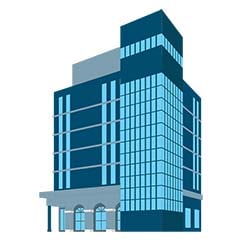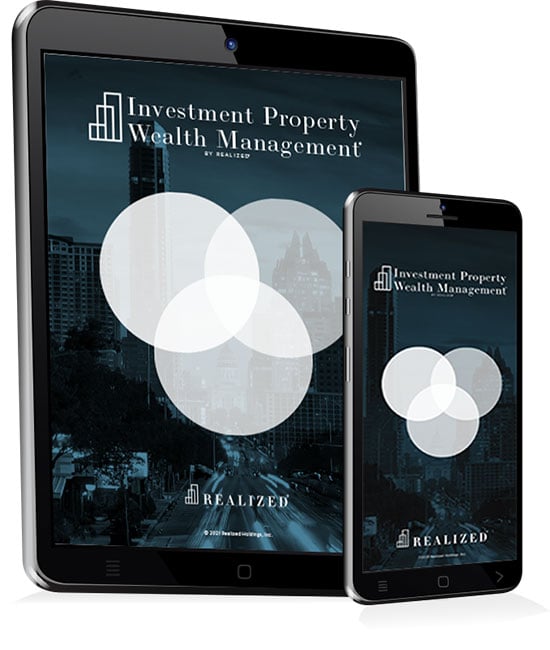
While talking about a real estate investment the other day, I fielded the question: “What is cash flow in real estate?” It's a great question. No doubt, one of the hallmarks of investing in real estate is the ability to generate current cash flow.
When I began explaining the concept, it dawned on me that there are several definitions for the term in real estate, depending on who is asking and answering the question. So in this post, I’ll dig into a few ways it can be calculated, and how real estate investors use it to evaluate potential real estate investments.
Any good accountant will tell you that in real estate net cash flow is calculated by taking the historical net income on the property’s financial statement and adding back any “non-cash” expenses like depreciation.
Fair enough, but if there is a mortgage on the property, the interest portion of the mortgage payments gets deducted in the process of calculating net income.
What about the principal portion of the payments, which aren’t necessarily relevant to the accounting department’s definition of cash flow?
Begrudgingly, an accountant will make the adjustments for the principal payments on the mortgage, and at the end of the process we get what most real estate investors refer to as "historical cash flow." For a real estate investor, it’s useful to know how much cash a property has generated.
But investors want to look into the future and have some understanding of how much cash they can expect to put in their pockets.
When acquiring property, real estate investors tend to focus on the future, or the pro forma. They start by calculating a property’s projected net operating income (NOI) for the twelve months (or often multiple years) following the acquisition. NOI is the anticipated revenues, less only expenses related to the operation of the property.
Depreciation, mortgage debt service payments (both interest and principal), income taxes and capital expenditures aren’t included in NOI. Why? Because with a good estimate of the property’s NOI, you can determine the following: what the property is worth, the amount you can borrow, the equity required, and ultimately, cash flow.
So let’s take a look an example showing how both the lender and investor use cash flow to make decisions.
Ron and Maggie are considering buying a small retail property, priced at $1,500,000. To evaluate whether this price is reasonable and if the loan is one a lender would be willing to make, they need to determine how much income the property is expected to generate in the 12 months following the acquisition.
So let’s take a look at an example showing how both the lender and investor use cash flow to make decisions.
Their evaluation of the property’s annual revenue looks like this:
| Item | Amount | Description |
| Gross Schedule Income | $115,000 | The sum of all rents, assuming 100% occupancy |
| PLUS: Expense Recoveries | $50,000 | Property expenses, reimbursed by the tenants (taxes, insurance, utilities, trash, janitorial, etc.) |
| PLUS: Other Income | $3,000 | Income from sources other than rents (fees, parking, vending machines, etc.) |
| LESS: Vacancy Collection Loss | -$5,000 | Rent loss due to vacant units or non-payment |
| EQUALS: Effective Gross Income (EGI) | $163,000 | The property's net revenue |
Ron and Maggie can now determine the property’s annual operating expenses. Notice that operating expenses do not include mortgage payments, capital improvements (like a new roof), depreciation, or income taxes.
| Property Taxes | $30,000 |
| PLUS: Property Insurance | $12,000 |
| PLUS: Utilities | $8,000 |
| PLUS: Property Management Fee | $7,000 |
| PLUS: Repairs Maintenance | $5,000 |
| EQUALS: Total Operating Expenses | $62,000 |
Next, Ron and Maggie calculate the property’s NOI, which is the difference between revenue (EGI) and operating expenses.
| Effective Gross Income | $163,000 |
| LESS: Total Operating Expenses | -$62,000 |
| EQUALS: Net Operating Income (NOI) | $101,000 |
At this point, If Ron and Maggie were not getting a mortgage on the property, the NOI would be equal to the property’s pro forma cash flow. In the case of a lender, the NOI is often referred to as cash flow available for debt service.
So, is the price reasonable? Well, a key metric used by commercial real estate investors to determine the value of a property is the capitalization rate, or cap rate. Cap rates provide a way to compare different real estate investments, as well as track pricing trends over time. To calculate a cap rate, divide a property’s NOI by its value for the period being evaluated. Here we are using pro forma, so we’re calculating the pro forma cap rate. Remember, Ron and Maggie can buy the property for $1.5 million.
| Net Operating Income | $101,000 |
| Price of Property | $1,500,000 |
| EQUALS: Property Cap Rate | 6.7% |
Similarly, if Ron and Maggie know the income and the cap rate, they can estimate the property’s market value. For example, let’s assume comparable properties in the area are selling at cap rates around 6%. They approximate the market value of the property as follows:
| Net Operating Income | $101,000 |
| Market Cap Rate | 6.0% |
| EQUALS: Estimated Market Value | $1,683,333 |
The property’s market value is $1.68 million. So if they can buy the property for $1.5 million, it looks like a pretty sweet deal. But can they get the financing they need?
Ron and Maggie want to place a mortgage on the property for $975,000. Given the purchase price of $1,500,000, the equity they will be required to invest is $575,000, plus closing costs. They want a 30-year, fully-amortizing loan at an interest rate of 6%. Assuming their bank will make the loan, the mortgage payment (principal and interest) will be $70,833 per year.
The lender, in their evaluation of the loan on the property, is going to compare cash flow available for debt service (i.e., the NOI of $101,000) to the mortgage payment ($70,833). This ratio is what’s known as the debt service coverage ratio or DSCR. On Ron and Maggie’s property, the pro forma DSCR is 1.43 ($101,000 / $70,833). The higher the DSCR, the safer the loan is for the bank. And because the bank requires a DSCR of 1.25 or greater, Ron and Maggie are confident they’ll be able to get this mortgage.
Back to the original question: What is the cash flow? Assuming that Ron and Maggie are correct, their cash flow from this deal is:
$101,000 (property NOI) - $70,833 (mortgage payment) = $30,167 (pro forma cash flow)
I know it seems like a lot of numbers. But with a legal pad and a pencil, or a quick spreadsheet, you can easily determine the value of a property you are considering, the loan it will support, the equity required, and ultimately the expected cash you can expect to put in your pocket.



